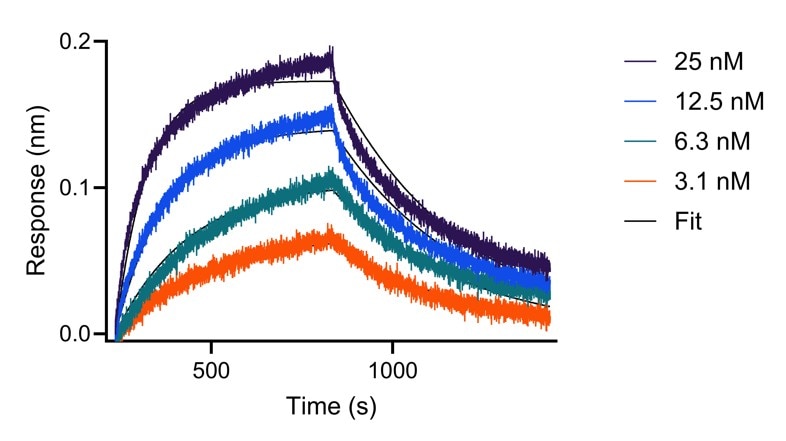Validation Data Gallery
Product Information
fgf9Cys1 is an unconjugated recombinant anti FGF9 Nanobody (VHH). Suitable for for cysteine conjugation with thiol-reactive reagents, e.g. maleimides. Note: unconjugated VHHs are not suited for usage without prior labeling, since they contain reactive Cysteines. Shipment and storage buffers contain TCEP to keep Cysteines reduced.
| Applications | Conjugation |
| Reactivity | Human |
| Conjugate | Unconjugated |
| Type | Nanobody |
| Class | Recombinant |
| Host | Alpaca |
| Affinity | / |
| Molecular Weight | 14.8 kDa |
| Form | Liquid |
| RRID | AB_3665412 |
| Storage Buffer | 10 mM HEPES pH 7.0, 500 mM NaCl, 0.09% sodium azide |
| Storage Condition | Store at -20°C |
| Shipping | dry ice |
| Background | FGF-9 is a 26 kdA, glycosylated protein that is a member of the FGF superfamily. It primarily binds with FGFR3 and plays prominent roles in the regulating embryonic, lung, and skeletal development. It is a key regulator of male sex determination through promoting the proliferation of pre-Sertoli cells. It signals in conjunction with FGF-10 and SHH to drive the development of the lung mesenchymal space. FGF-9 is also a positive regulator of chondrocyte proliferation and osteogenesis during the bone formation process. Overexpression of loss of FGF-9 during skeletal development often results in aberrant bone growth. (PMID: 28395336, 25772309, 16540513, 25435023). |


